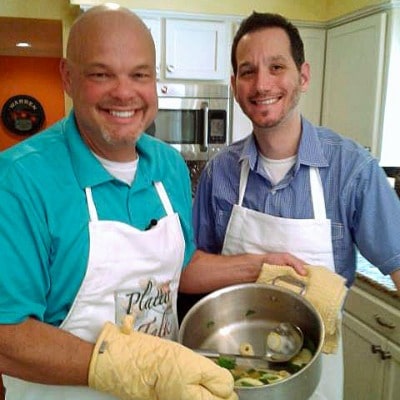How to Tell When Peaches Are Ripe: Your Ultimate Guide
on Aug 06, 2023
This post may contain affiliate links. Please read our disclosure policy.
Peach season is a time of celebration for many, with visions of juicy peaches, peach cobbler, peach chutney, and endless tasty dessert recipes filling our minds.
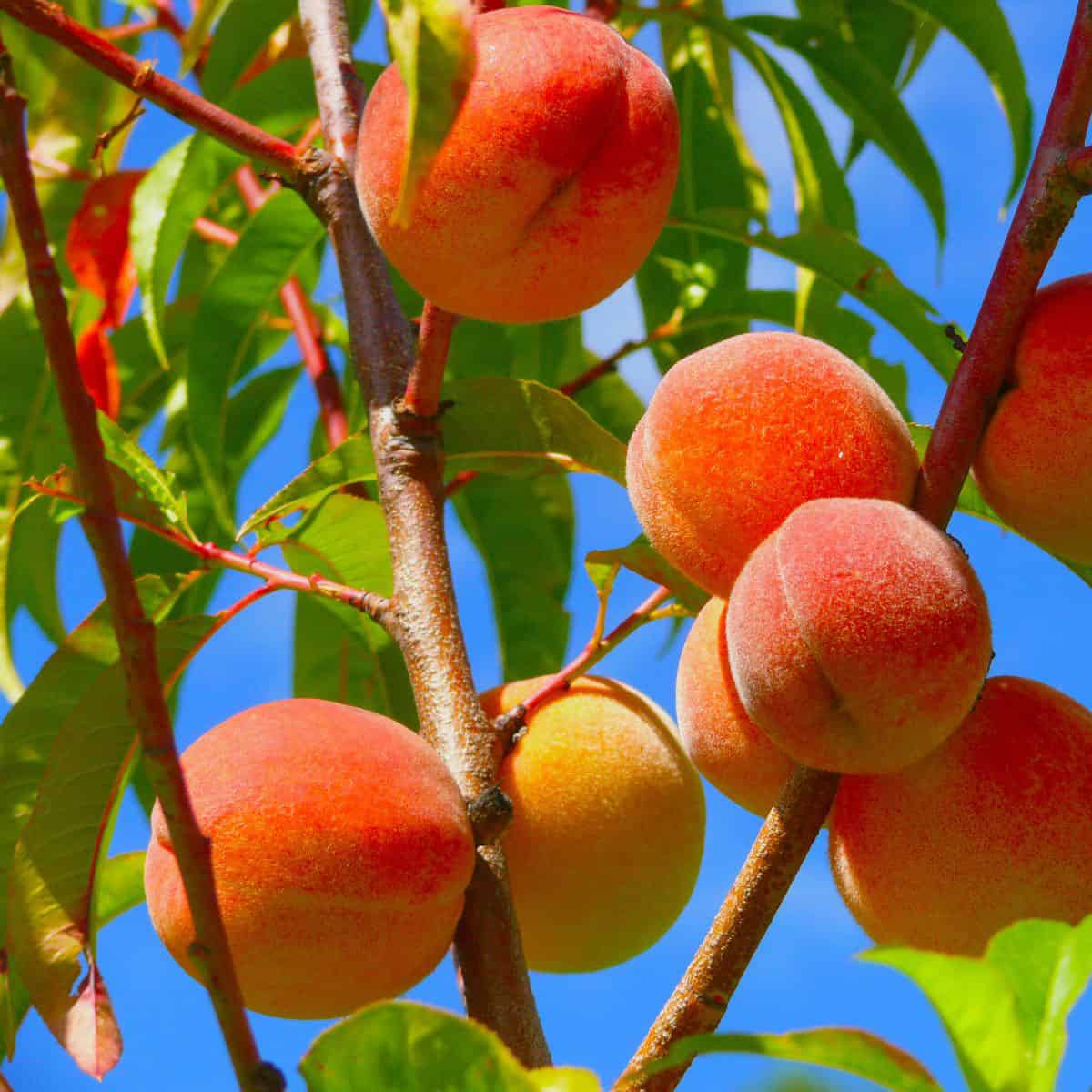
But how can you ensure you get the juiciest peaches and not the bad peaches that lack much taste?
Just like these other useful kitchen tips, read on and I’ll show you a detailed guide to help you make the best peach recipes and how to tell when peaches are ripe.
Table of Contents
I’ve had a love affair for peaches almost as long as I can remember. Back on the farm in upstate New York, my folks would order half a bushel of fresh Georgia peaches every spring.
Back then, it seems I never wondered how to tell when peaches are ripe. They came to us ready to eat, like a gift from God.
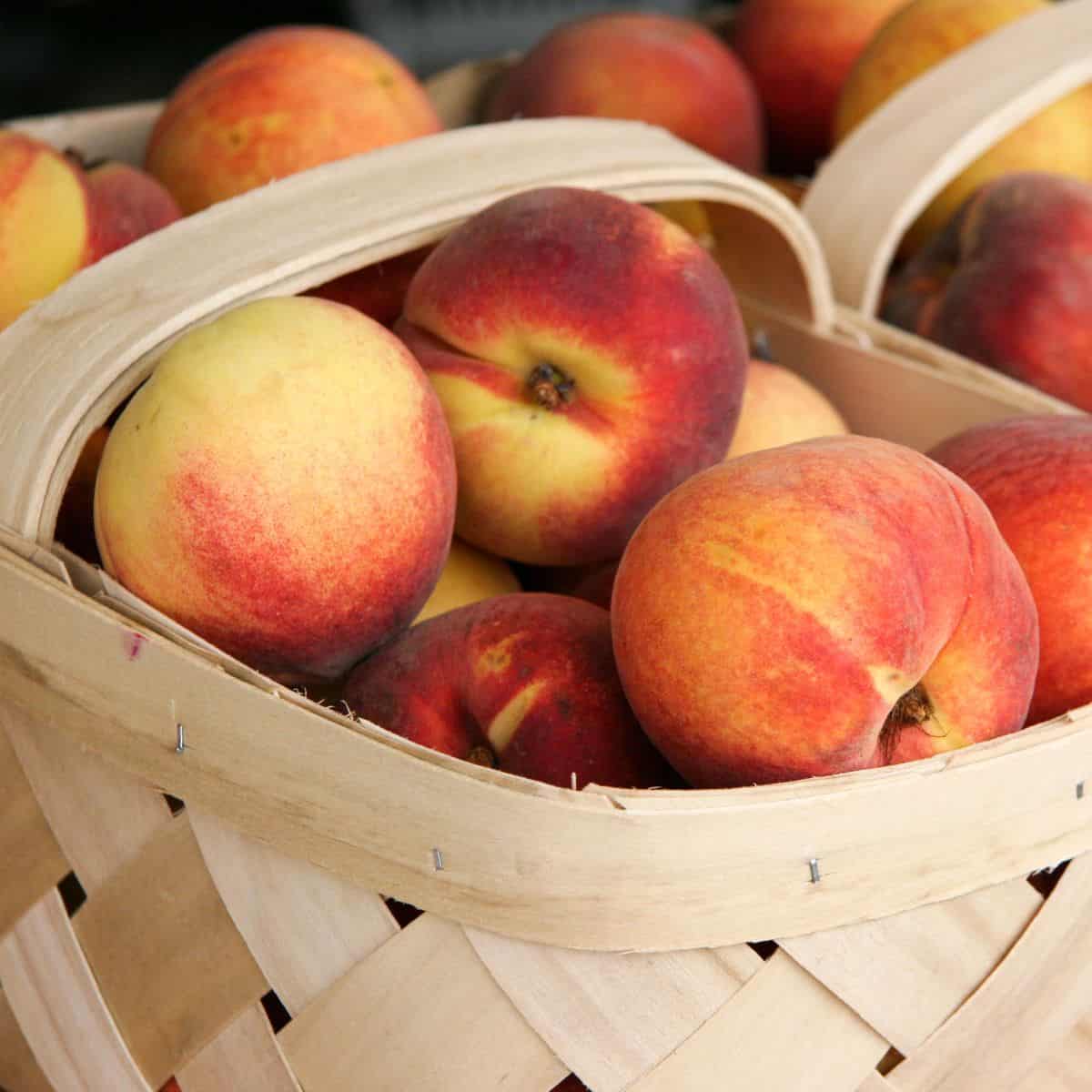
How long does it take for peaches to ripen?
The exact time it takes for a peach to ripen can vary based on several natural resources, including the type of peach, where it’s grown, and the conditions it’s exposed to.
Typically, peaches start appearing in farmer’s markets and local grocery stores from late June to late September. However, just because they’re available doesn’t mean they’re at their peak ripeness.
Do peaches continue to ripen after they’re picked?
Yes, peaches are a climacteric fruit, which means they continue the ripening process even after being picked. This is unlike an apple tree, where the apple stops ripening once plucked.
This property of peaches allows farmers to pick them slightly unripe, preventing damage during shipping and then allowing them to become a perfectly ripened peach by the time they reach your kitchen counter.
How do you ripen store-bought peaches?
If you’ve bought a bag of peaches that feels more like a bag of tennis balls, don’t despair. The best method to expedite the ripening process is the good old brown paper bag trick. Here’s how:
- Single Layer: Lay your green peaches in a single layer inside the bag.
- Add a Ripe Fruit: Introduce a ripe apple or banana. These release natural ethylene gas, a fruit-ripening stimulant.
- Close and Wait: Fold the top of the bag and leave it on your kitchen counter at room temperature.
- Check Daily: In a couple of days, you’ll have ripe fruit ready for your favorite fruit salad or to be savored on its own.
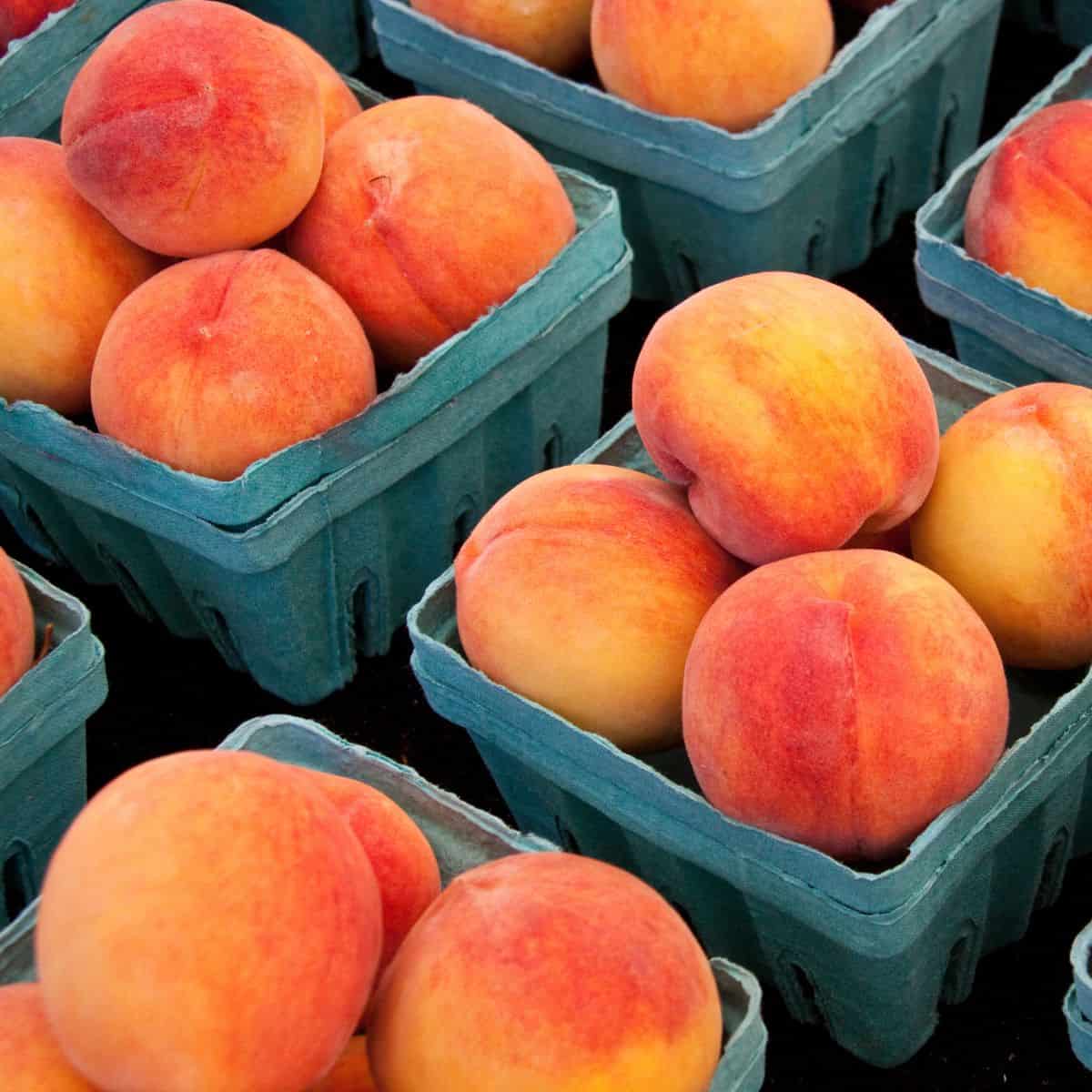
Plastic bags can speed up the process even more, but they might also invite fruit flies, so the brown paper bag remains the best way.
Can you pick peaches before they are fully ripe?
Yes, peaches can be picked before they are a fully ripe peach. In fact, many farmers do this to ensure the peaches don’t become overripe peaches on the tree.
However, this means the utmost importance is on post-harvest care. A hint of green left on the peach is okay and will continue to ripen at room temperature.
How to tell when peaches are ripe
Telling if a peach is ripe and ready to eat can be determined by a few sensory cues:
Want to Save This Recipe, Friend?
Touch
A ripe peach will yield slightly to gentle pressure, particularly around its stem. It should feel firm but not hard. If it’s overly soft or mushy, it’s overripe.
Color
Look for a deep, uniform color. The exact hue can depend on the peach variety, but generally, you want to avoid any green undertones, which suggest the peach is not yet ripe. Remember that the deep red or blush on a peach doesn’t necessarily indicate ripeness; it’s more about where the fruit was exposed to sunlight. It’s the background color (usually yellow or cream) you should be inspecting.
Aroma
A ripe peach will have a fragrant, sweet aroma. If it doesn’t smell like anything, it’s probably not ripe yet.
Skin Texture
The skin of a ripe peach will be taut and wobble-free. Wrinkling near the stem (not to be confused with natural creases) often indicates an overripe or aging fruit.
Feel of the Stem Area: The area around the stem should be slightly soft. If it’s hard, the peach is not ripe yet.
Check for Blemishes
While this doesn’t indicate ripeness, you should check for excessive bruising or other blemishes. A few imperfections are normal, but large or deep ones can indicate that the fruit is damaged.
If your peaches are not quite ripe, you can leave them out at room temperature for a day or two to ripen. Once they’re ripe, you can store them in the refrigerator to prolong their freshness, but aim to consume them within a few days for the best taste and texture.
More questions about peaches
Peaches become mealy when their starches don’t properly convert into sugars during ripening, often due to cold storage or picking them before they’re fully mature. This results in a dry, grainy texture instead of the desired juicy sweetness.
From peach smoothies to peach pie, here are a bunch of things you can make with mealy peaches.
- Make Smoothies: Blend them with other fruits, yogurt, and some honey or maple syrup.
- Cook or Grill Them: Cooking can help break down the mealy texture. Grilled peaches with a drizzle of honey or balsamic reduction are delicious.
- Bake Them: Use them in pies, crisps, or cobblers. Baking can mask the texture while retaining the peach flavor.
- Peach Sauce or Puree: Blend mealy peaches to make sauces for desserts or pancakes.
- Peach Jam or Preserves: The texture of the peach will be less noticeable once it’s been cooked down with sugar.
- Freeze for Later: Puree and freeze them to use later in recipes or drinks.
- Make Peach Sorbet or Ice Cream: The texture won’t matter once they’re blended and frozen.
- Use in Salsas: Combine with tomatoes, onions, jalapeños, and cilantro for a fruity salsa.
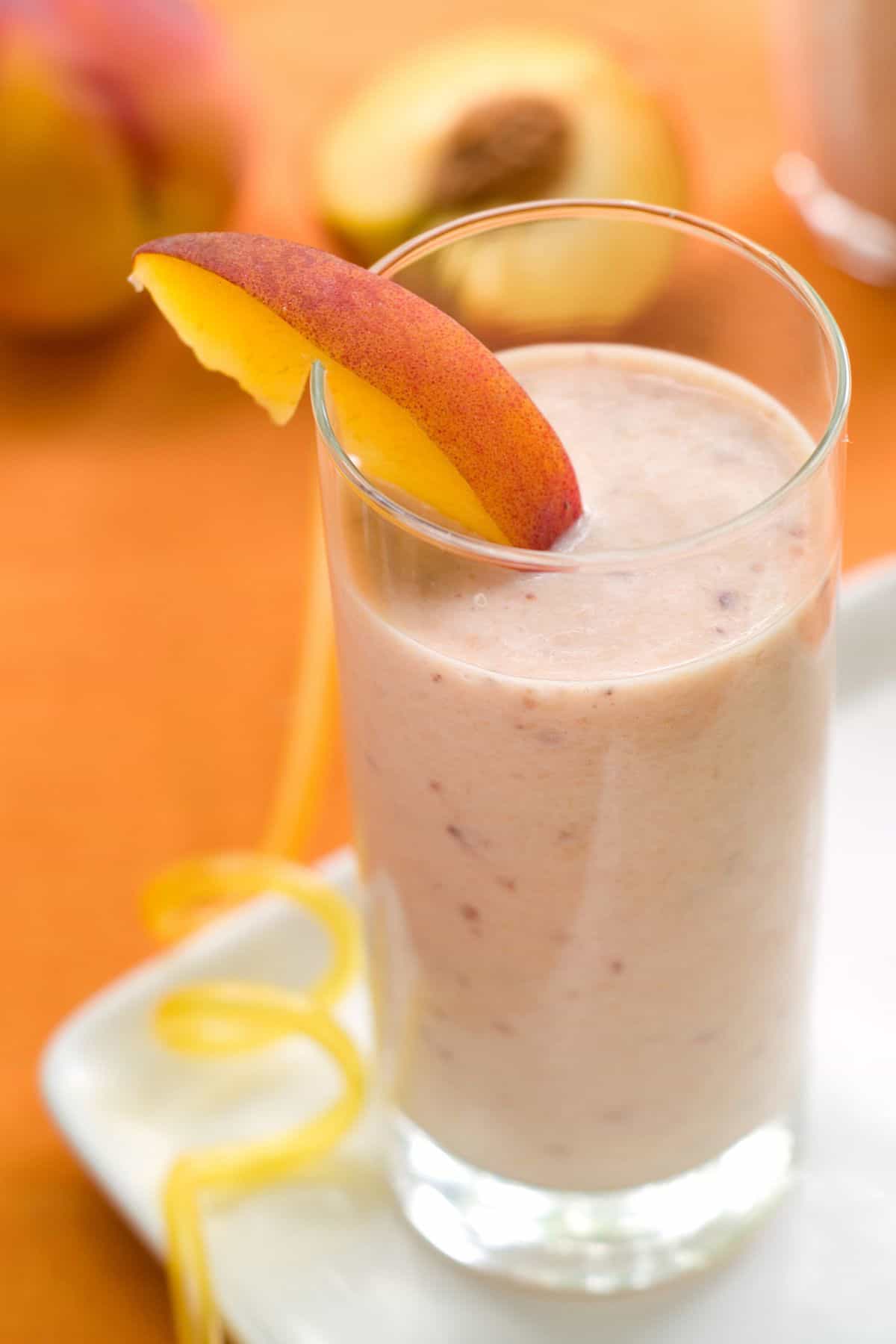
While they might not be the best for eating out of hand, mealy peaches can still shine in many recipes!
Pro Tip: How to Avoid Buying Mealy Peaches – To avoid buying mealy peaches, select fruit that has a fragrant aroma and yields slightly to gentle pressure, and avoid those stored in cold areas, as chilly temperatures can disrupt the ripening process and lead to mealiness.
Useful tips and fun facts
- Avoid Direct Sunlight: While you might be tempted to place unripe peaches in direct sunlight, this might cause uneven ripening. Room temperature in a shaded area is the best way.
- Stone Fruit Knowledge: Peaches belong to the stone fruit family, Prunus persica, because of the large, central seed. White-fleshed cultivars are often sweeter with much less of the slightest hint of tang compared to the yellow-fleshed ones.
- Farmer’s Market vs. Grocery Stores: Peaches from a farmers’ market are often tree-ripened fruit, making them superior in taste to those at commercial stores. But remember, even a tree-ripened peach can benefit from a teeny bit of ripening at home.
- DIY Peach: Growing your own peach tree? The best time to pick is when the fruit separates easily from the branches.
- Bad Signs: Visible dark spots or excessive brown spots can be indications of rot or overly ripe fruit. Beware of fruit flies, too; they love overripe fruit!
- Uses for Overripe Peaches: If you have overripe peaches, they can still be salvaged for jams or added to ice cream after a splash of lemon juice.
To wrap things up, you can make the most of peach season. Whether you’re planning to devour a whole fruit, make a delicious peach cobbler, or enjoy the great flavor of a fresh peach, the key is to know the right time to indulge.
All of these hints should give you a better idea of how to tell when peaches are ripe.
So, the next time you’re at the farmer’s market or your local grocery, use these tips and enjoy the sweet smell of success or, rather, perfectly ripened peaches! 🍑
👨🍳 Tried this Recipe? Please leave a ⭐⭐⭐⭐⭐ rating in the recipe card below and leave a comment. We love hearing from our readers!
⏩ Stay in touch with us on social media by following us on Facebook, Pinterest, Instagram, and YouTube!
📬Get our Recipes delivered to your inbox for FREE!
